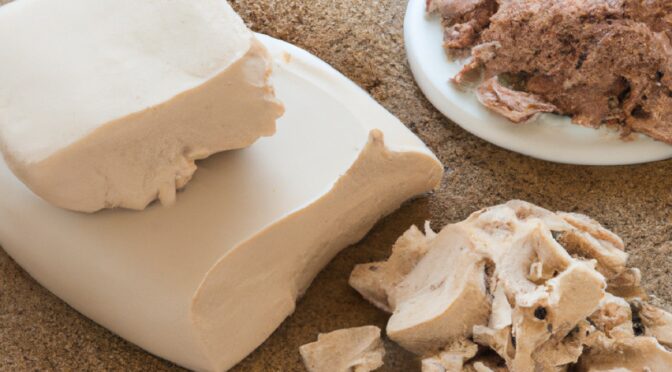Fresh Yeast vs. Which dry yeast to choose for your pizza. Dear pizza lovers,
If there's one thing we can all agree on, is that pizza is one of the most delicious culinary creations in the world. But when it comes to making the perfect pizza at home, One of the most important choices you have to make concerns the type of yeast to use. Present Day, we will explore the big question: fresh yeast vs. dry yeast. Which one should you choose for your pizza? Sit down, relax and prepare to discover everything you need to know!
The Magic of Yeast in Pizza
Before we get into the comparison between fresh yeast and dry yeast, we must understand the importance of yeast in the preparation of pizza. Yeast is the magic ingredient that gives pizza its lightness and soft texture. When the yeast comes into contact with the sugars present in the dough, starts to ferment, producing carbon dioxide which makes the dough rise. The result? A golden crust, soft and fragrant that we all love.
Fresh yeast: The Classic of Tradition
Fresh yeast, also known as brewer's yeast, it has long been a favorite in making traditional pizza. It has a soft consistency and is sold in the form of cubes or bricks. To use it, you have to dissolve the fresh yeast in a while’ of warm water and wait for it to become active, before adding it to the pizza dough.
One of the reasons fresh yeast is so loved is its flavor. Adds a slightly malty flavor to the dough, which many find irresistible. In addition to, the fresh yeast helps to create a crust that is crunchy on the outside and soft on the inside, a perfect combination for an authentic pizza.
Dry yeast: The Practical Choice
On the other hand, Dry yeast has become increasingly popular due to its convenience. It is sold in small packets or sachets and has a longer shelf life than fresh yeast. You can easily store it in the pantry without worrying about it deteriorating.
To use dry yeast, you simply mix it with the flour into the dry dough and then add the water. There is no need to wait for the yeast to activate like with fresh yeast, which makes the pizza making process faster.
The challenge: Which is Best for Your Pizza?
Now that we have looked at the main characteristics of both types of yeast, the question remains: which one to choose for your pizza? The answer largely depends on your personal preferences and needs.
If you love tradition and want to get an authentic flavor, fresh yeast may be the best choice for you. Its unique flavor and ability to create a traditional crust will make you feel like you're in a first-class Italian pizzeria.
If you are looking for practicality, dry yeast might be the right choice. It is easy to store, it has a longer shelf life and simplifies the preparation process. If you want to make a pizza quickly without too many frills, dry yeast is a sensible choice.
Advice from the Experts
However, Here's our expert advice: experience both. The beauty of making pizza at home is the ability to customize every detail. Try making two identical pizzas, one with fresh yeast and one with dry yeast, and compare the result. Ask your friends and family which one they prefer.
In addition to, if you want to deepen your knowledge of pizza and become a true expert, consider sign up for our pizza chef courses that we organize in our Pizza School Silvio Cicchi. Our courses will teach you the deepest nuances of the art of pizza, including different yeast options and how to best use them.
Conclusions
In conclusion, Choosing between fresh yeast and dry yeast for your pizza depends on your personal preferences and needs. Both types of yeast can make delicious pizzas, each with its own unique characteristics.
Don't forget that, regardless of the type of yeast you choose, passion is the secret ingredient for an extraordinary pizza. Experiment, have fun and don't hesitate to sign up for our pizza maker courses at Silvio Cicchi's Scuola della Pizza to take your skill to the next level. Bon appetit and happy cooking!
Ciao
Silvio Cicchi
Visit and subscribe to my youtube channel with 300 Video recipes of pizza
